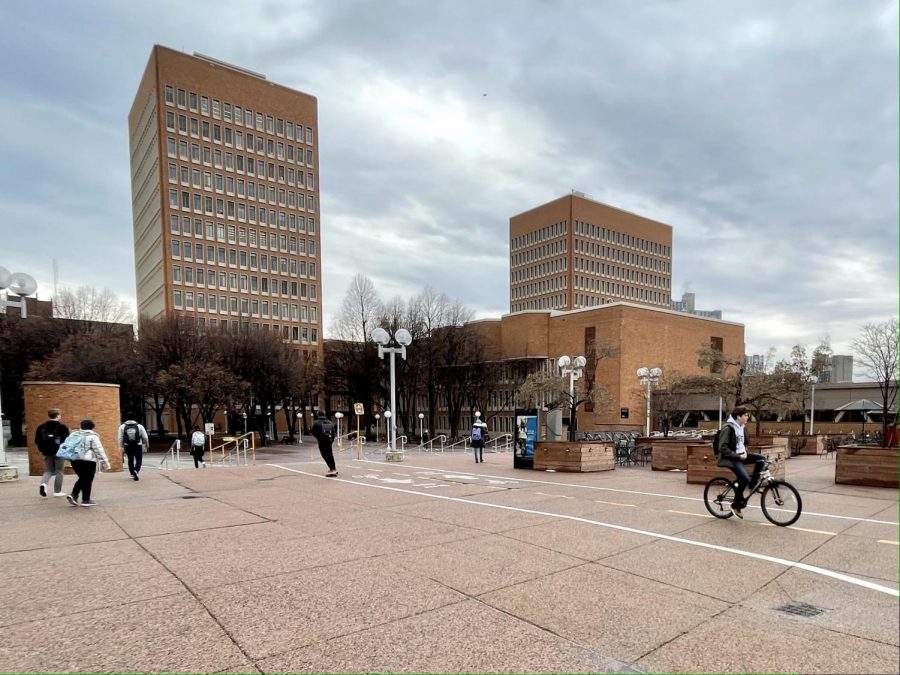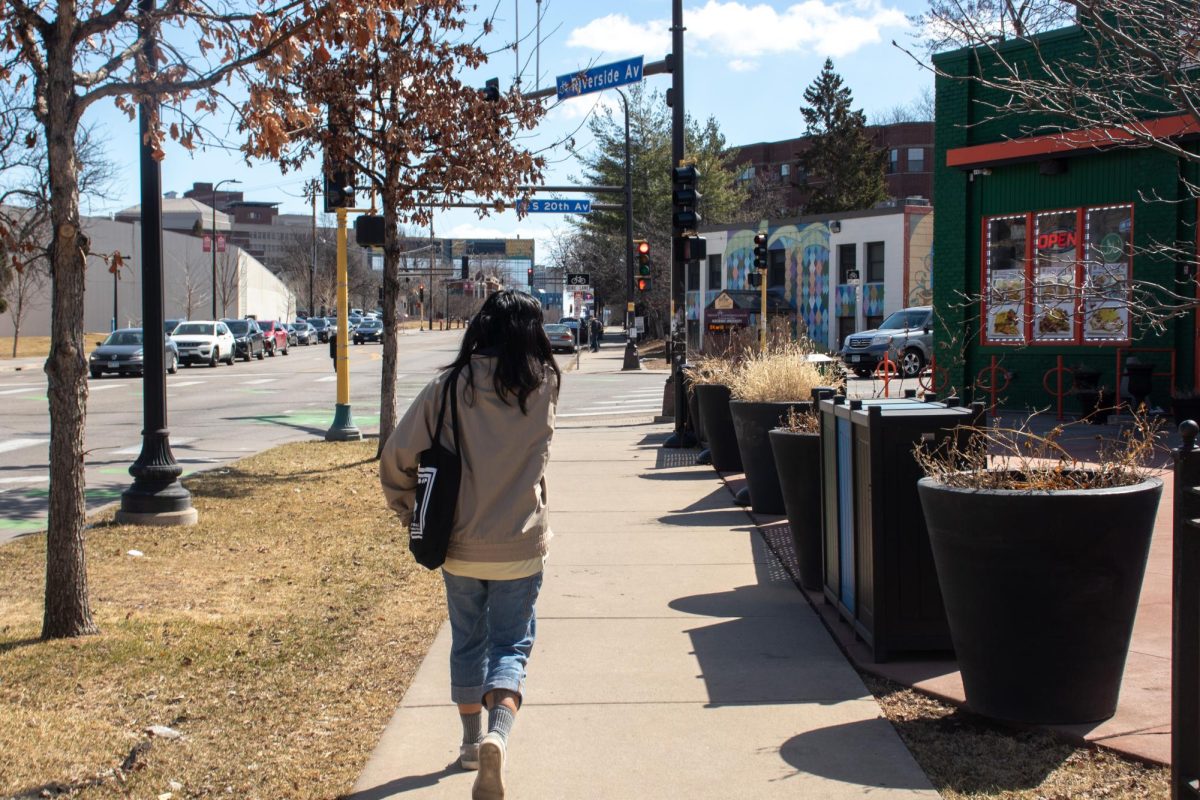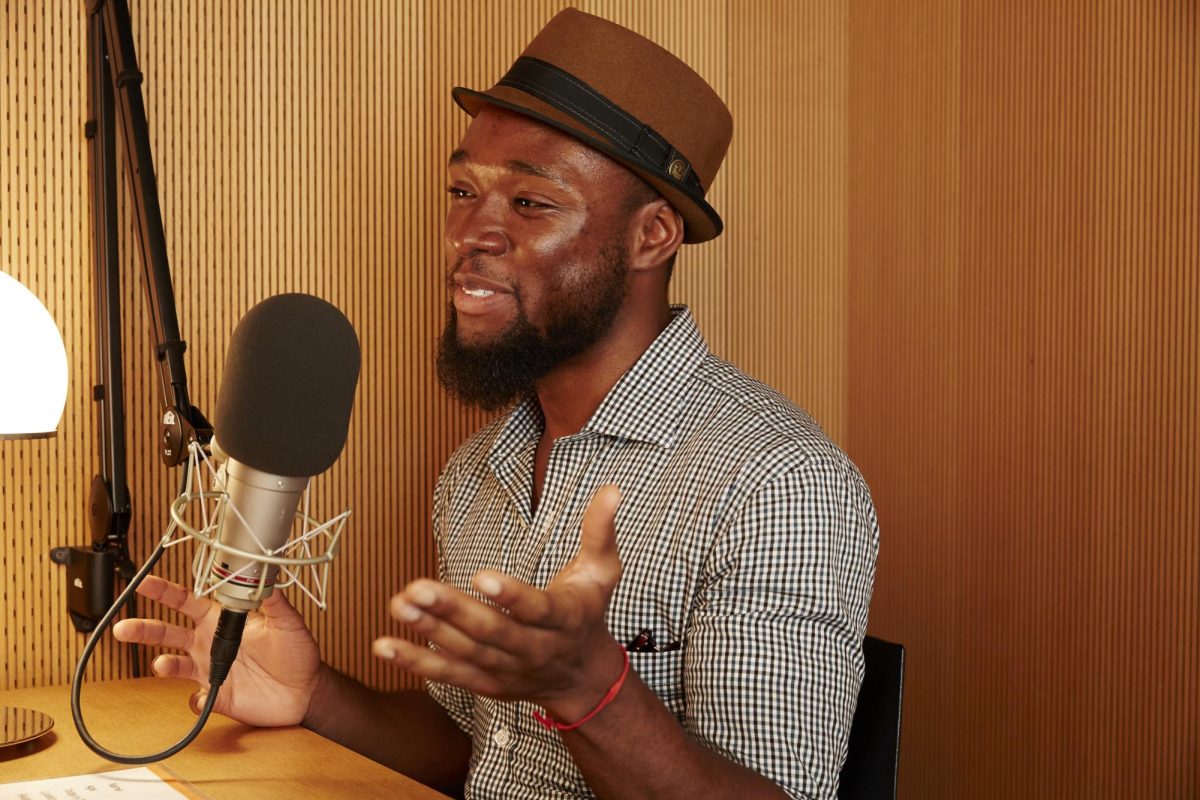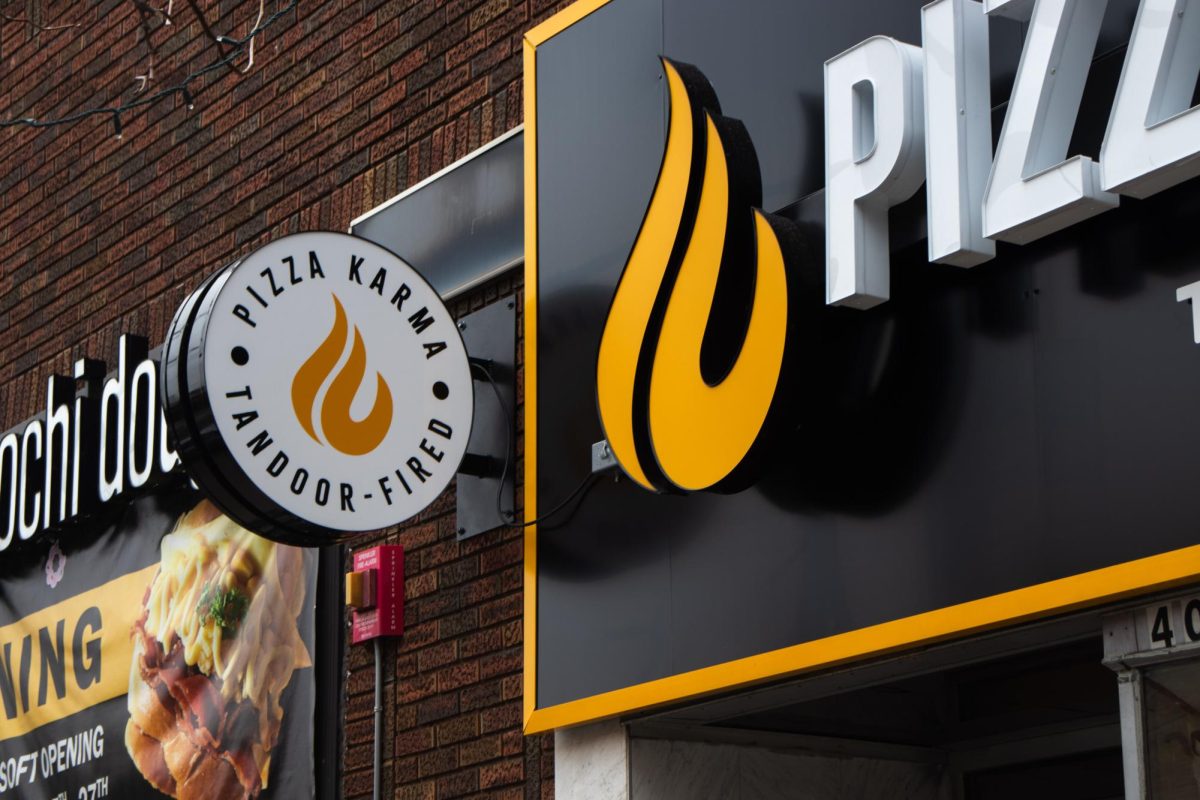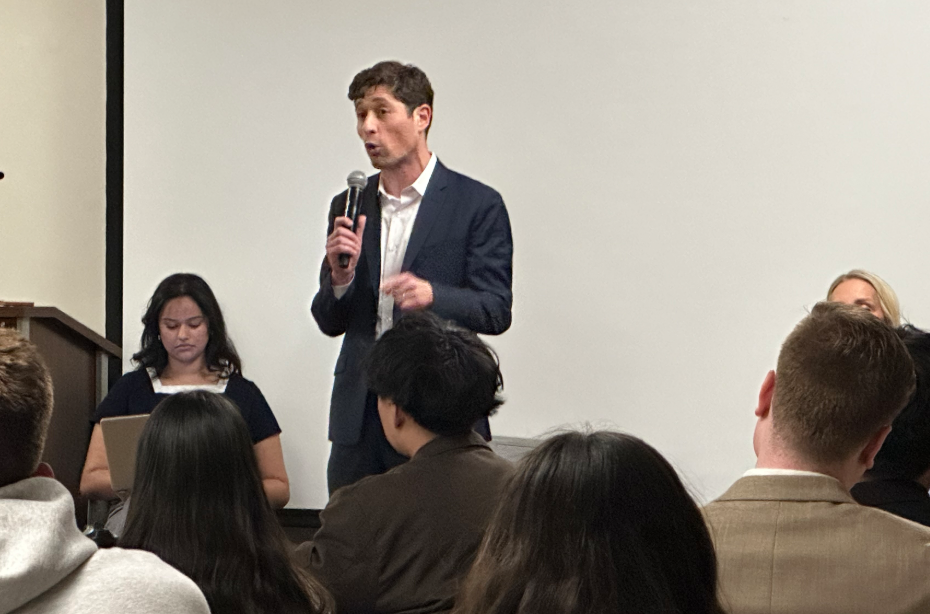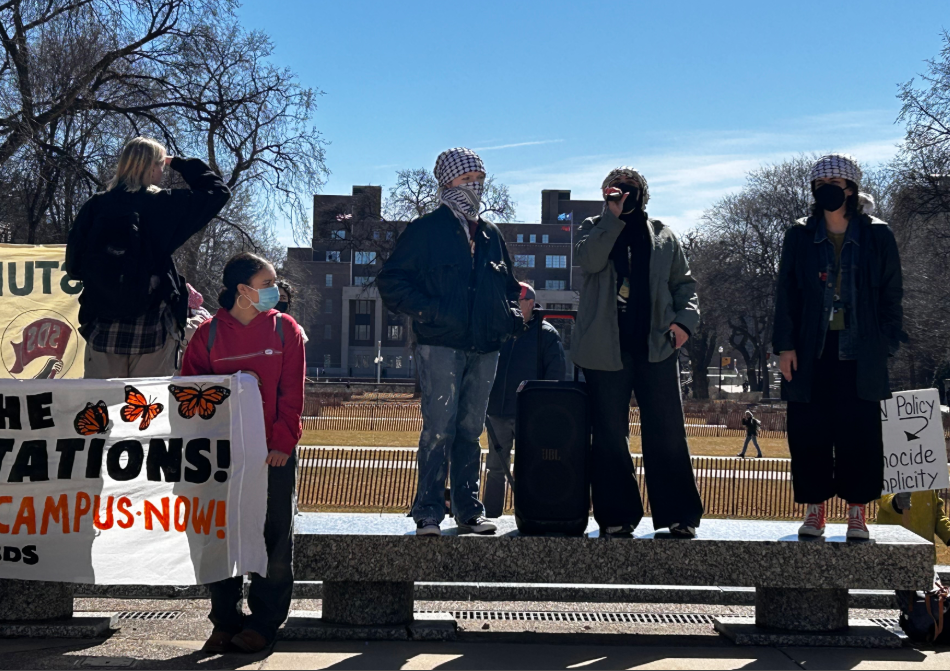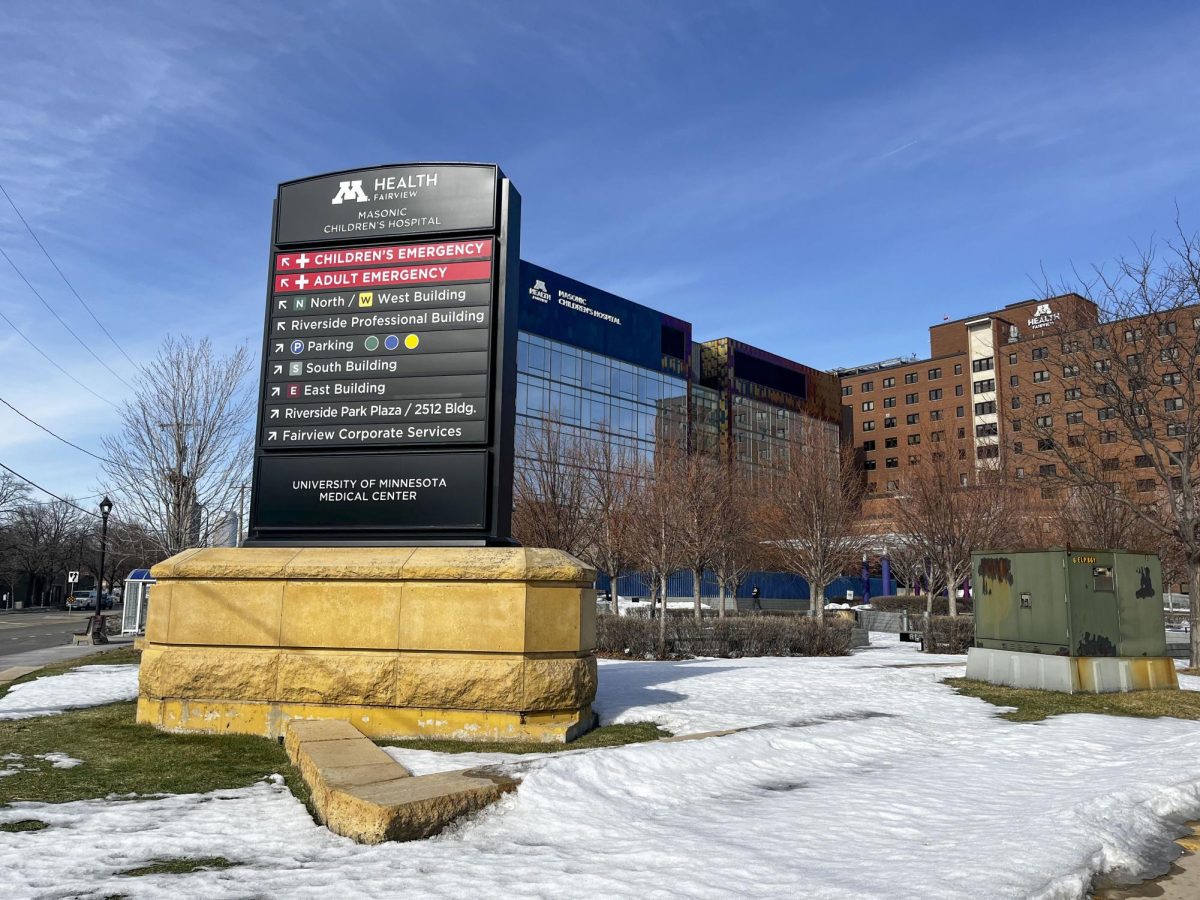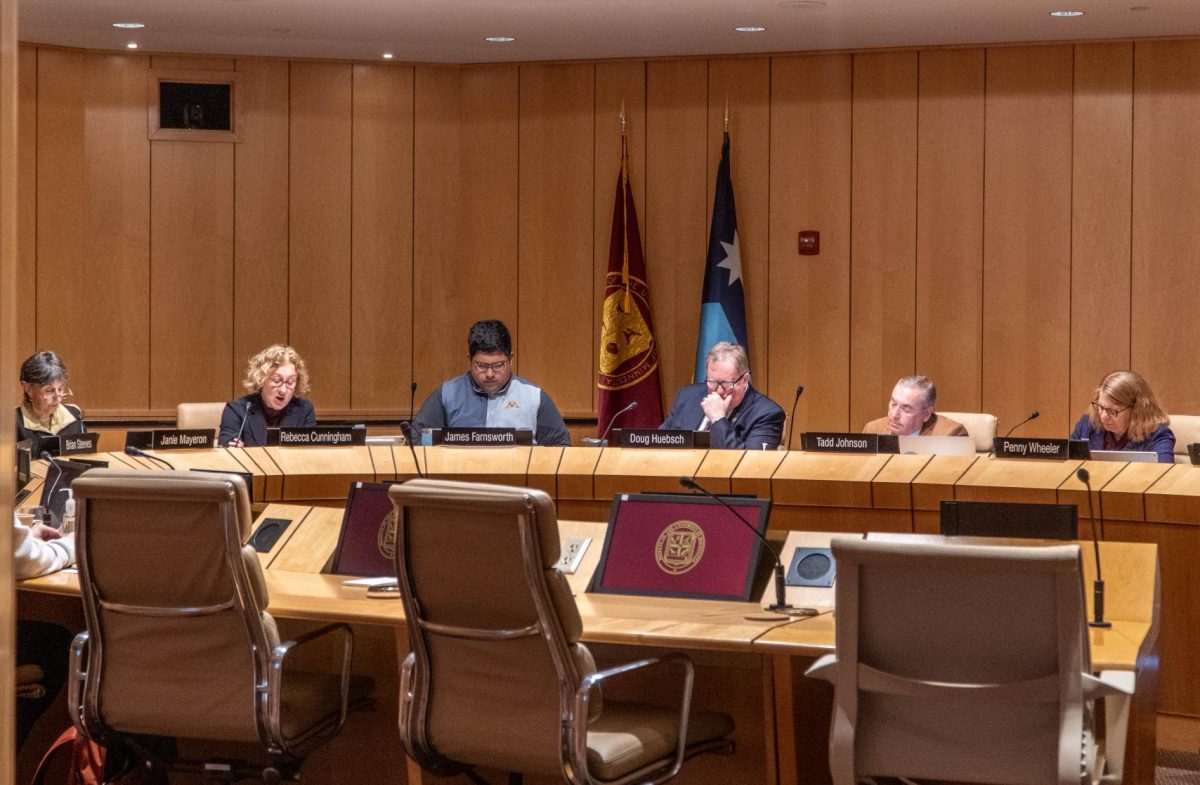University of Minnesota community members may have seen new bike signs around campus starting in mid-November at high traffic intersections calling attention to bikes and pedestrians.
The signs were placed at high traffic intersections as part of an Industrial and Systems Engineering (ISyE) student project at the University of Minnesota. As part of the class, two different groups distributed pamphlets about bike safety and placed signs around campus to better manage bike and pedestrian traffic.
Students in the class said they frequently bike around campus and noticed a lack of awareness of bikers and pedestrians at high traffic intersections, leading students to tackle this issue for their final project.
Blessie Mande, a fourth-year in ISyE, said her group’s project was inspired by the intersection outside Bruininks Hall.
“When you walk outside of Bruininks Hall by the bridge and where all the people are and the bike lane coming off the bridge it’s just a really chaotic, hectic area of campus.” Mande said. “I’m a biker so I’m used to swerving around people trying not to hit people.”
Mande also said their group felt some new University students could use guidance on bike lane etiquette due to being unfamiliar with campus as a result of the COVID-19 pandemic.
According to the course’s professors Corrinne Fiedler and Mike McFarlane, one group of students worked with the University’s Parking and Transportation services and the other worked with Boynton Health to create bike safety messaging and pamphlets encouraging people to use reflective gear, obey traffic laws and be aware of their surroundings.
“Our goal is to increase the number of people wearing helmets, reflectors and headlights on campus, make [bikes] even more visible and just generally educate people on the importance [of bike safety],” said David Kelly, a fourth-year University student in ISyE.
The groups hosted events and talked to bikers about the importance of wearing helmets while also making connections with the University bike community.
“It was a little more involved going out interacting with people on the streets, hanging posters up,” Kelly said. “It was kind of nice, coming back from a year of online classes to do that kind of in-person work.”
These bike safety signs are just one example of the many projects in this ISyE class that Fiedler and McFarlane teach. One skill the course teaches students is how to write proposals and status reports.
“The second is to teach them project management skills; how to think about risks, and how to sort out the difference between a deliverable and an impact,” Fiedler said. “And thirdly, just to keep it from being book learning that would be less impactful for their senior design project.”
ISyE is a newer undergraduate major at the University and teaches a curriculum of increasing productivity and optimization of modern life.
Fiedler and McFarlane said they hope this class, and these final projects on bike and pedestrian safety and the others in the class, provide students with practical engineering experience. Next semester, students will work at firms in the Twin Cities as part of their final senior classes.
“There may be multiple right answers, and how you get to the answer is as good as the answer itself,” McFarlane said. “Using real life or a practical hands-on approach helps experience that more.”


